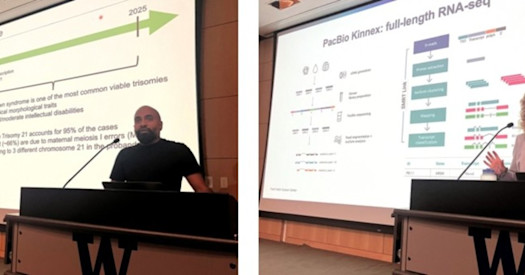 Chia-Lin Wei: 'I hope to understand problems individuals are facing and how we as a community can adopt long-read sequencing and develop protocols, so that people, particularly clinicians, can more easily use the technology'
Chia-Lin Wei: 'I hope to understand problems individuals are facing and how we as a community can adopt long-read sequencing and develop protocols, so that people, particularly clinicians, can more easily use the technology'
[NOTE: Dr. Wei, Ph.D., is the Director of the Northwest Genomics Center and a Professor of Genome Sciences at the UW. She is scheduled to present at the BBI-sponsored Long-Read Sequencing Symposium on October 28th at the Seattle Children’s Research Institute.]
What is the topic of your presentation and what do you want participants to learn from it?
While I have not yet decided on the specific topic, I intend to structure my talk on the application of how long-read sequencing technology can facilitate biomedical research. I want people to take home the impression that this technology has matured, and to understand ways it can be used in addressing real biological problems.
What do you hope to learn from the symposium?
As a technology person, I hope to understand problems individuals are facing and how we as a community can adopt long-read sequencing and develop protocols, so that people, particularly clinicians, can more easily use the technology. Make long-read technology easier for others to use.
Dr. Danny Miller, who leads BBI’s long-read sequencing program, has said: “I believe (long-read sequencing) is well-poised to increase the diagnostic rate, decrease the time it takes to make a genetic diagnosis, and reduce barriers to accessing comprehensive clinical testing.” What do you believe the scientific community needs to do to accomplish such goals?
I agree with Danny. He firmly believes in the technology and I am with him. Long-read sequencing has been well-adopted in research communities and the technology has matured to make a real impact in genetic diagnosis. The gap is to work with clinicians to put this in clinical labs and to devote resources to make the system practical for patients and the health care industry. This is what the field is working toward. We still have a lot to do. Mostly, we need early adapters willing to put in the time to move this technology forward.


